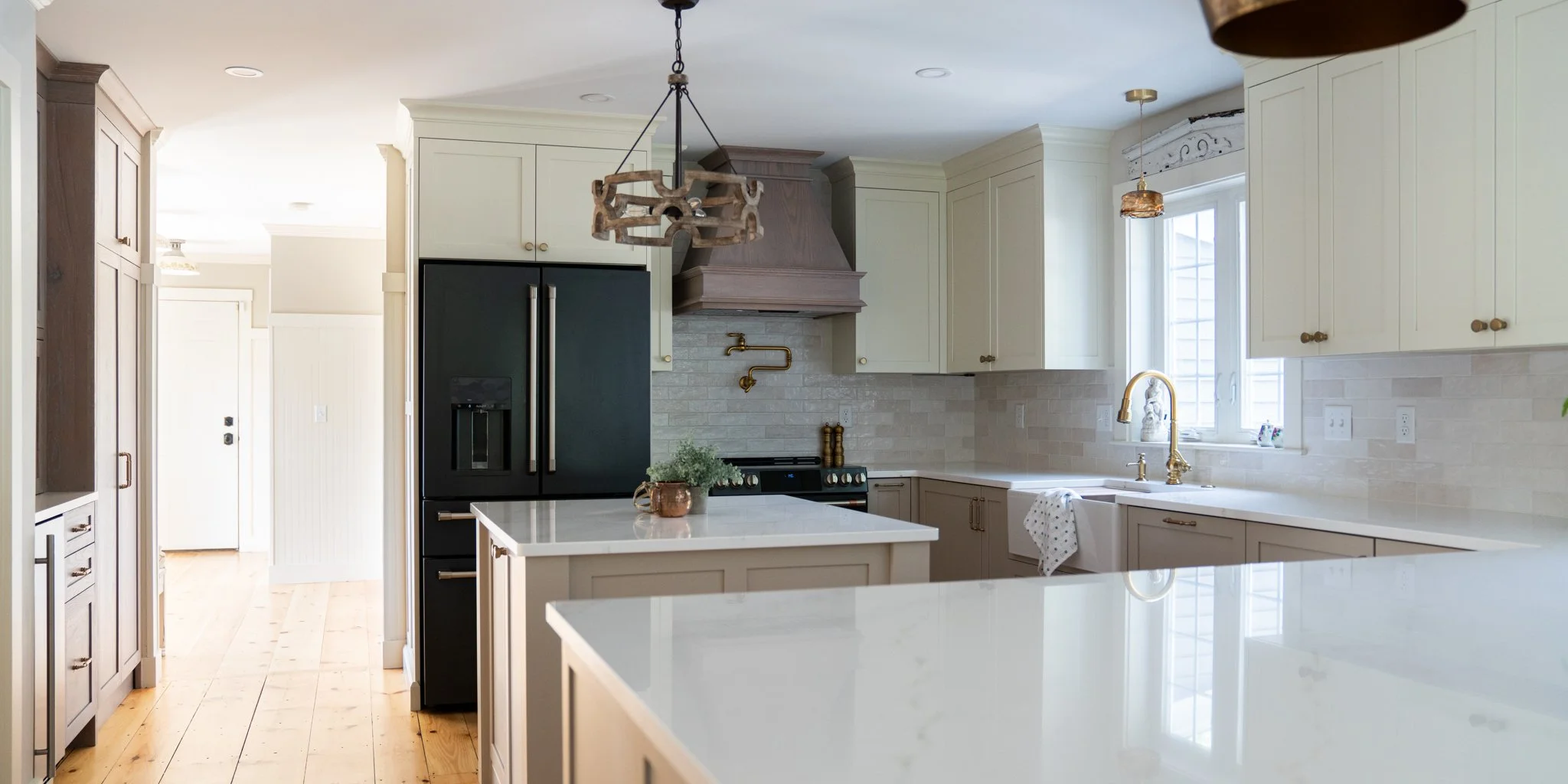Designing a Host’s Kitchen
With the holidays right around the corner, it’s the perfect time to talk about what a host’s kitchen truly needs in order to thrive. Whether you prefer your kitchen to be the center of the entertaining space or more of a behind-the-scenes workspace, these tips will help make it the perfect setting for the season.
One of the most important parts of hosting is having enough space to prepare. Yes—prep space is even more important than having a spot for guests to gather. If you don’t have room to work and the equipment to make the food, why host in the first place? A major part of this is having more than one oven. That could mean a stacked double oven or a conventional stove-and-oven combo paired with a drawer-style speed oven tucked neatly under a cabinet. This setup allows you to cook multiple dishes at once, saving precious time and counter space.
Which brings us to another key design element: counter space. You’ll likely have several dishes in progress at the same time, and if you have a partner helping, you’ll both need enough room to work comfortably. That might mean adding an island or peninsula, or—if you’re working with a smaller kitchen—choosing appliances and a sink that aren’t as wide as standard options to maximize your counters.
Next, consider storage. If you entertain often, you likely have a lot of…stuff. Platters, multiple dish sets for different occasions, small appliances, mixers, food processors—you need places to put all of it. When designing your kitchen, it’s important to designate specific cabinets early on and determine whether you need a pantry or even a separate closet elsewhere in the home to house these items. Cabinet organizers can also make a huge difference: spice pull-outs, utensil dividers, and tray organizers help keep everything accessible so you can find what you need quickly during the busier moments of hosting.
Finally, think about what kind of entertainer you are—and what your kitchen size allows for. If the kitchen is your preferred gathering space, make sure there’s room for guests as well as space for you to work. Islands and peninsulas help keep people nearby, add storage, and create a natural gathering point while you’re prepping or plating food. If you have a smaller kitchen but still want guests to mingle there, it might be worth considering the extra cost of removing a wall if the layout allows. While it adds to the renovation budget, it’s a worthwhile investment if you plan to stay in the home. On the other hand, if you prefer guests to gather elsewhere, focus on creating the most efficient workspace possible—and consider pocket doors or another type of partition between the kitchen and the rest of the home.
When designing kitchens and homes for our clients, we always ask whether they host parties or holidays. While it may seem like a small detail, having the right space to accommodate company not only makes hosting easier—it improves the experience for your guests as well.



